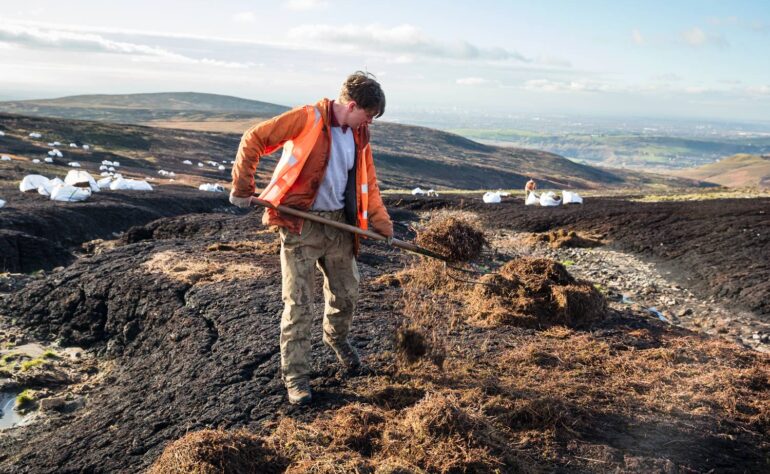A strong policy framework is critical to maximise the potential for Britain’s uplands to deliver climate solutions, drive green growth and improve security.
The climate solutions sector is surging around the globe, and not a moment too soon, because conventional land use is ill equipped to handle the escalating pressures of climate disruption, biodiversity loss and rural poverty. In the UK, property consultancy Knight Frank forecast that landowners which prioritise natural capital and climate solutions over intensive land uses such as grouse shooting can expect to see land values rise.
However, current frameworks lag behind what is necessary for taking Britain’s uplands in a direction where restoring land for nature, carbon storage and people is at the forefront of tackling climate change and biodiversity loss. A strong land use framework is critical to further advancing the climate solutions sector and maximising the potential to improve climate resilience, reverse biodiversity loss and alleviate rural poverty.
To address this gap head on, the Climate Change Committee has recommended that the UK Government produces and implements a national land transformation strategy to place harnessing the power of nature to tackle climate change at the forefront of the race to net-zero.
Wild Moors have long supported a transition away from intensive land usage in the uplands towards cheaper, better and environmentally-benign alternatives. That’s why we’re working to unlock an area of uplands the size of Greater London from grouse shooting for nature restoration by 2030.
As part of our pledge our expert team of eco-entrepreneurs and environmental policy specialists have outlined three key areas where government action would release the potential for a green market revolution in Britain’s uplands:
Bring together businesses, communities and government to regenerate nature in the uplands through investment in climate solutions. This will support jobs and green infrastructure, innovative climate solutions, such as carbon offsetting and flood management, and drive landscape scale restoration of carbon-rich habitats such as peatlands and woodlands.
Provide incentives for landowners and land managers to shift from intensive grouse moor management to climate solutions as a core land use in the uplands.
Support open-access research and development into accelerating carbon offsetting and other climate solutions in the uplands which will benefit the environment, economies and communities.
It comes at a time when Britain’s grouse moors are struggling to rear enough red grouse to sustain shooting because climate change is disrupting the breeding patterns of these sensitive game birds. As a consequence, many grouse moors across northern England and Scotland have run significantly reduced shooting programmes or cancelled them altogether for the past three seasons.
In times of great turmoil, there is great opportunity, and the necessity of shifting towards a more sustainable and systemic style of land management in the uplands has never been clearer than it is today. As Sir David Attenborough recently declared: “Restoring biodiversity is the only way out of the crisis we have created. And that, in turn, means rewilding the world, re-establishing the balance, step by step.”
It should be noted that this is not an objective to make moorland estates obsolete, but to offer a better alternative to grouse moor management, which is why it should be considered as systemic innovation. It’s about an innovation that operates on a systems basis that connects all the stakeholders together to re-think a better land management system for future generations, whilst getting back into balance with nature.
